
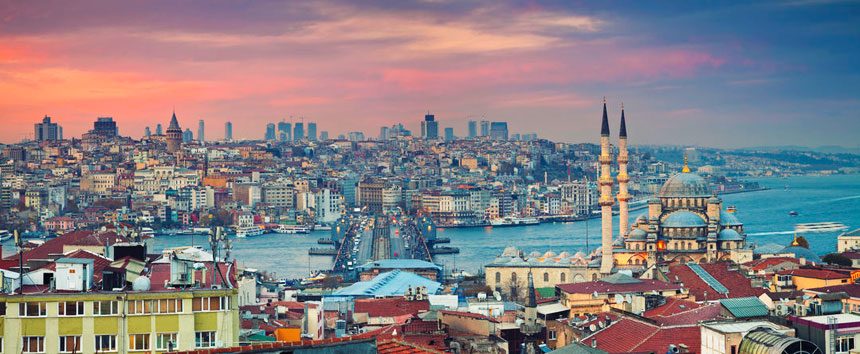 Image credit: rudi1976
Image credit: rudi1976 The allure of Istanbul lies in its strategic location between the continents of Europe and Asia. Visitors flock to Istanbul to get the best of both worlds and experience European and Asian life which blends uniquely in this Turkish city.
There is no lack of fun things to do in Istanbul. This historical and cosmopolitan city is a great destination that can be enjoyed by everyone, from the rich and famous to the most budget-conscious backpacker.
Below is a list of top 10 things to do in Istanbul. Each item is chosen to include activities that offer great value for your money and help you capture the best beauties of Istanbul.
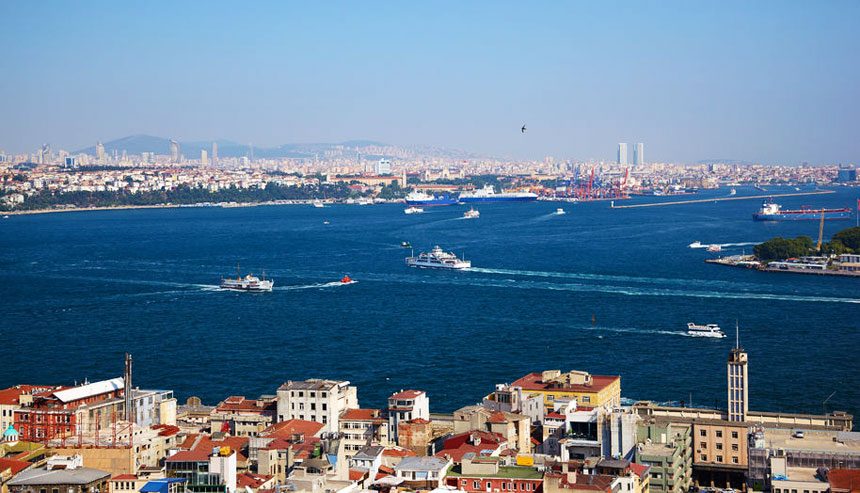 Image credit: sergeyp
Image credit: sergeypWhat
The Bosphorus Strait is a strategic waterway in Northwestern Turkey that connects the Black Sea to the Sea of Marmara, separating Europe and Asia.
Its shores are packed with stunning architectural buildings, from imperial palaces, mosques, and towers to residential houses in styles of yesterday and today. Added to this landscape are parks and villages, making it a good option for sightseeing. Most of the Istanbul’s landmarks are within view from the strait.
Why
Cruising at the Bosphorus gives us a very rare opportunity to see the sights of two continents – Europe and Asia – in one go. To the East lies the Asian part of Turkey while the European side lies to the West.
It is also the best option for those who don’t have ample time in the city to cover plenty of its key attractions. Take a cruise tour is a wise way to enjoy many Istanbul’s must-see in one journey.
The scenic view along the strait is something to behold. So, don’t forget your camera and to take a photo of yourself while in Europe and Asia!
Notable landmarks along the route
Watch for the grandiose Dolmabahçe Palace on the European coast of the Bosphorus Strait. This historical landmark was built in the 19th century, combining many styles of European architecture. The palace served as the administrative center and the primary residence of six sultans from 1856 to 1922.
Another sight to behold is the Rumeli Fortress or Rumelihisari which sits on a hill within Turkey’s Sariyer District at the European side of the Bosphorus. It was built between 1451 and 1452 by the Ottoman Sultan Mehmet II as he was preparing for his siege of Constantinople.
The Maiden’s Tower lies on a small islet off the Asian coast of the Bosphorus Strait at Turkey’s Üsküdar District. According to Turkish legend, the tower was built by an emperor who wanted to protect his beloved daughter from death by snakebite, as prophesied by an oracle. Thus, the name Maiden’s Tower.
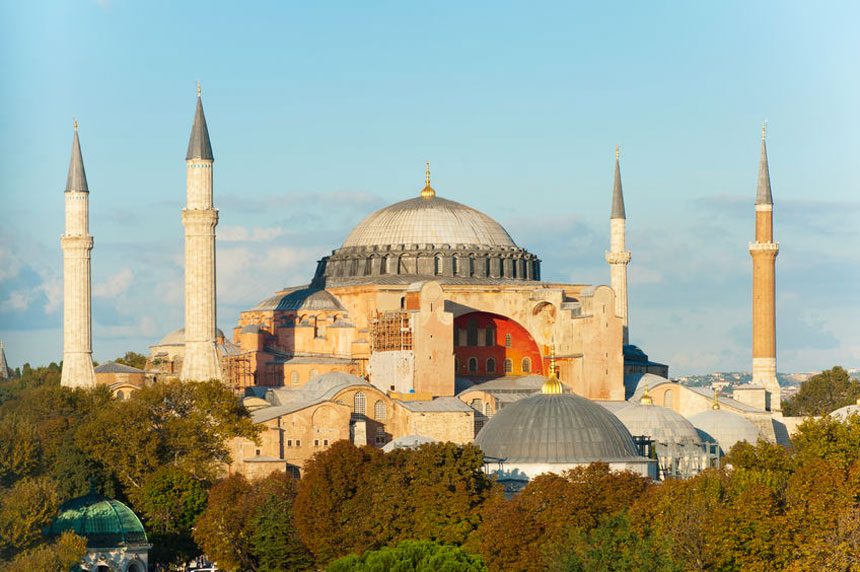 Image credit: fyletto
Image credit: fylettoWhat
Hagia Sophia is listed as one of the Seven Wonders of the Medieval World and was chosen as a UNESCO World Heritage Site in 1985.
This architectural magnum opus was originally built as a church by Byzantine Emperor Justinian I between 532 and 537. It stood as the world’s largest cathedral for nearly a thousand years and was later used as a mosque after the conquest of Constantinople. In 1934, it was converted into a museum upon the orders of the First Turkish President, Mustafa Kemal Ataturk.
Why
Just being one of the 7 Wonders of the World is enough reason to visit this landmark.
The building is an architectural masterpiece itself. Its glorious interior with magnificent domes, exquisite Christian mosaics, and dazzling Islamic calligraphy is worth marveling at for a dose of art for our soul.
For centuries, Hagia Sophia was of great importance to the Christian and Muslim world. One can visit the place to learn more about Turkey’s history or to have a glimpse of the old days and stand where great rulers once stood.
Highlights that you should not miss
Stand in wonder beneath Hagia Sophia’s central dome. The dome is considered to be one of the biggest cathedral domes in the world. It defies physics and gravity at a height of 55.60 metres and a width of 31.87 metres.
Walk like an Emperor and pass through the Emperor Door which is believed to be made of wood from Noah’s ark. It is the largest door of Hagia Sophia at 7 metres high with bronze frames and bronze-plated leaf design. The door was built for the exclusive use of the Emperor, thus, its name.
Make a wish at the Wishing Column at the northwest portion of Hagia Sophia. It is believed to have healing powers after Emperor Justinian once got relieved of a severe headache after leaning his head on this column. Insert your thumb inside the hole of the column, rotate it completely clockwise, and make your wish!
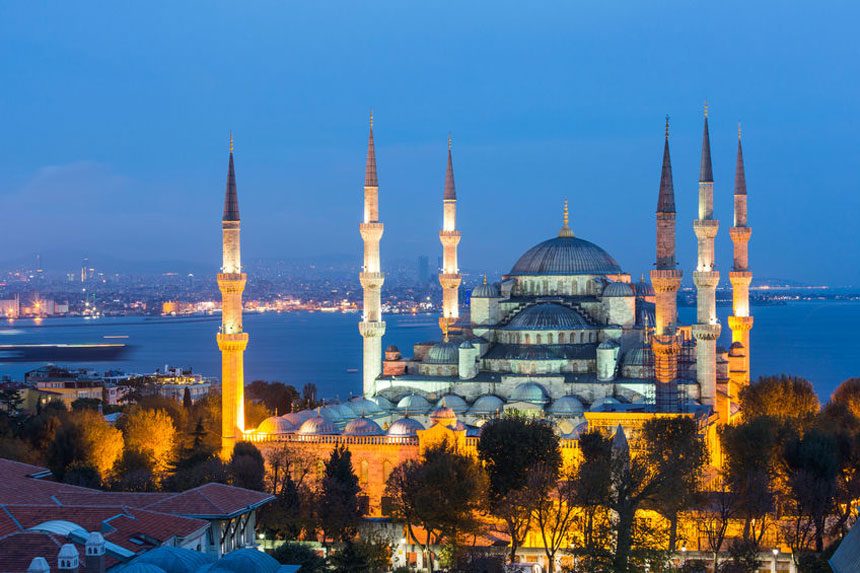 Image credit: william87
Image credit: william87What
The Blue Mosque, officially known as Sultan Ahmed Mosque, is a functioning mosque that was built in the early 17th century, during the rule of Sultan Ahmed I.
It rivals the splendor of the nearby Hagia Sophia with its 6 minarets and many cascading domes. Inside, you can find more than 20,000 blue Iznik tiles in various tulip designs, which gave the Blue Mosque its popular name.
Why
The Blue Mosque remains as the most visited mosque in Turkey. It is open even to non-worshippers for free.
Visitors come to admire its classic Ottoman architecture. To fully appreciate its design, enter through the Hippodrome side and marvel at the mosque’s perfect proportions from the courtyard. Once inside, stand beneath the huge domes or enjoy the beauty of the tile designs at the gallery.
As an added bonus, stay at the park at sunset, listen to the call to evening prayers, and watch the Blue Mosque become beautifully illuminated with colored lights.
Visitors’ notes
The Blue Mosque is closed to non-worshippers at certain hours during pray time, so plan your visit well. Visitors must enter through a separate door. Dress conservatively and wear a headscarf if you are a woman. Scarves can be borrowed for free near the entrance. Flash photography is not allowed.
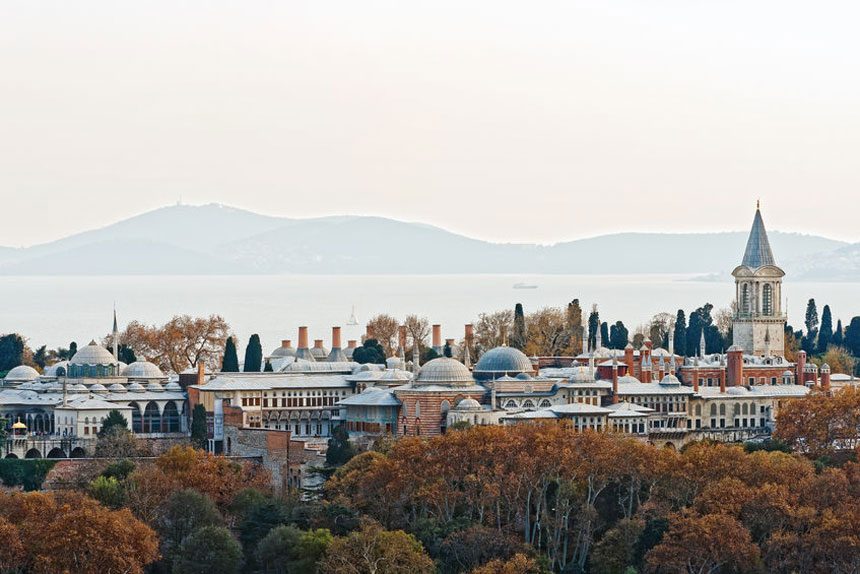 Image credit: stefanholm
Image credit: stefanholmWhat
Topkapi Palace is one of the most popular sites for visitors in Istanbul. It is located on top of a hill overlooking the Sea of Marmara, the Bosphorus Strait, and the Golden Horn.
The palace served as the administrative center and the main residence of the Ottoman sultans for almost 400 years between the 15th and 19th centuries.
This UNESCO-World-Heritage-Site palace got its name from the huge cannons displayed outside of its gates, called “Topkapi” or “Gate of Cannons” in Turkish.
Why
Relive the lives of Turkish royals at Topkapi Palace!
A tour around this historical landmark gives you a glimpse of the opulent lives of the Ottoman sultans and their families. Explore the lush courtyards, check out the kiosks, and walk around the pavilions to go back in time during the heydays of the Topkapi Palace.
Must-see highlights
Check out the Harem where you can find more than 400 rooms that housed the sultan’s wives, children, extended family members, concubines, and servants.
Visit Hagia Irene, a church originally, an armory later and a museum now. Here, you can find the weaponry that was used by the Ottoman army.
Ogle at the crown jewels and other valuable treasures at the Imperial Treasury.
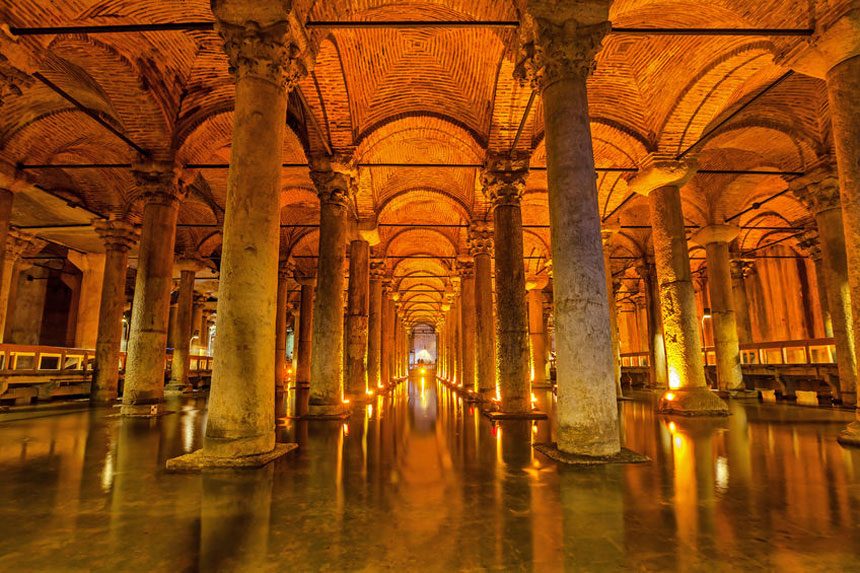 Image credit: bbsferrari
Image credit: bbsferrariWhat
The Basilica Cistern is a Byzantine-era underground cistern located below the Sultanahmet Square. It was built in 532 by Emperor Justinian I as storage for the city’s water supply.
The cistern used to lie beneath the Stoa Basilica, thus, its name. The basilica is now long gone and only the cistern remains.
For a long time, the Basilica Cistern was a forgotten part of Istanbul history until it was rediscovered by Peter Gyllius in 1545. At that time, he noticed the locals drawing water, and sometimes even catching fish, from holes in their basements. He decided to explore these wells and found the huge cistern that was lying all along under the city.
The Basilica Cistern measures 138 metres (453 feet) in length and 64.6 metres (212 feet) in width. Its sheer size allows it to store 100,000 tons or close to 3 million cubic feet of water.
The ceiling is supported by 336 columns that were recycled from other buildings. Some columns reflect Corinthian designs, while others are Doric in style.
After its rediscovery, the Istanbul Metropolitan Municipality had the cistern dredged and cleaned up. It was finally opened to the public in 1987.
Why
Escape the hustle and bustle of the city and retreat to the quiet and serene atmosphere of the Basilica Cistern. Mood music and soft lighting have been added to this “Sunken Palace”, making the whole experience more romantic.
See it to admire the remarkable feat of engineering from the 6th century.
Highlights that you should not miss
Take a stroll inside the cold hall amid the symmetrically lined columns that is reminiscent of a palace court.
And make sure that you walk all the way to the northwest corner of the cistern where you can find the two uniquely placed Medusa heads that are used as bases for two pillars.
You can also try finding the “wishing column” and see if your wishes will come true.
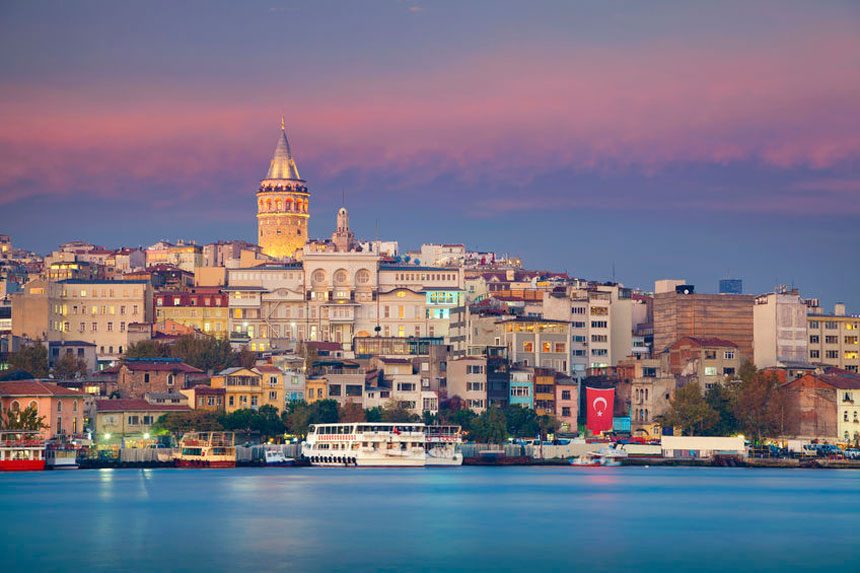 Image credit: rudi1976
Image credit: rudi1976What
The Galata Tower, also known as the Tower of Christ, is a medieval stone tower in Istanbul that offers 360-degree panoramic view of the city.
The 9-storey tower was built in 1348 by the Genoese colony and stands 66.90 meters tall. It was Istanbul’s tallest structure at the time of its completion.
The Galata Tower underwent several restorations after being destroyed numerous times. In fact, it remained without its cone-shaped roof after a major damage caused by a storm in 1875. The roof was reconstructed only in the 1960s.
Why
Istanbul, with its surrounding bodies of water and beautiful historical structures, is best seen from a high point like the Galata Tower. Nowhere else in Istanbul sightseers can enjoy a better vista of the city as well as a panorama of the two continents.
You can spot a lot of Istanbul’s famous sites like the Hagia Sophia, the Blue Mosque, and the Topkapi Palace from the tower’s observation deck.
To double your satisfaction, visit the tower at night and enjoy the fantastic evening view of Istanbul over Turkish food at the Galata Tower restaurant. You can also opt for the daytime service of the cafeteria which serves lesser priced meals.
Visitor’s information
The tower is open daily from 09:00 to 20:00. Entrance fee is 10 TL ($3.38) for Turkish citizens and 20 TL ($6.76) for foreigners.
Daily opening hours of the Galata Tower restaurant is from 20:00 to 00:30.
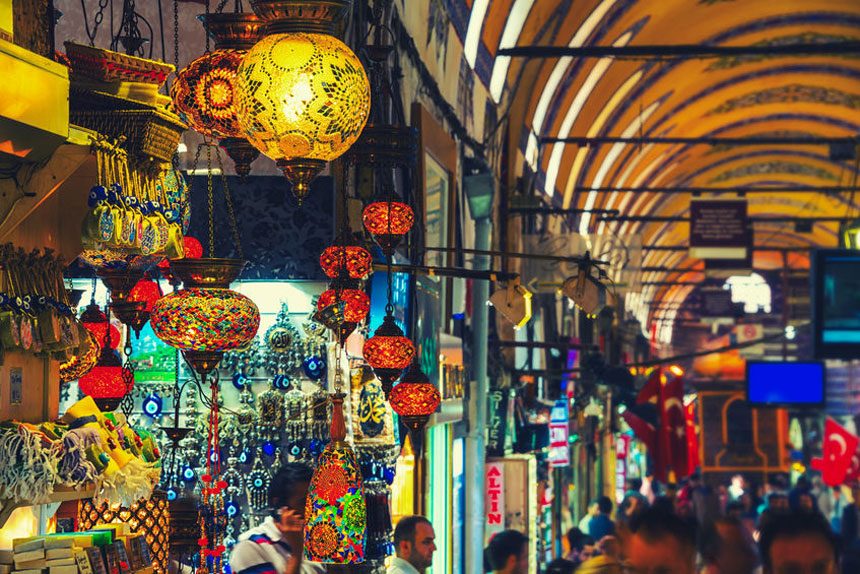 Image credit: madrugadaverde
Image credit: madrugadaverde What
The Grand Bazaar in Istanbul is one of the oldest and largest covered bazaars in the world. It is over 500 years old and was built shortly after the Ottoman conquest of Constantinople.
The bazaar covers 61 streets with over 4,000 shops selling a wide variety of goods such as carpets, leather, ceramics, clothing, and souvenirs.
Stalls are grouped according to their products which makes it easier for shoppers to find what they need. Special areas are assigned for precious items like gold and jewelry.
Why
A day at the Grand Bazaar gives us a glimpse of market life in the older days. Though much has been changed with the overall look of the bazaar, the authentic feel of a Turkish market is still evident.
You can try out your haggling skills at the bazaar and get good value with your purchase.
If you are not out to buy anything, you can simply sit at one of the bazaar’s over 60 restaurants and cafes and watch the frenzy of shoppers and vendors from your table.
Shopping tips
Never pay for the declared price upfront. Always haggle! You can start by going down as low as 50% off and haggle your way from there. A 35% discount is a good bargain.
Keep a close watch of your purchases and belongings. Some shoppers have fallen prey to pickpockets and bag slashers.
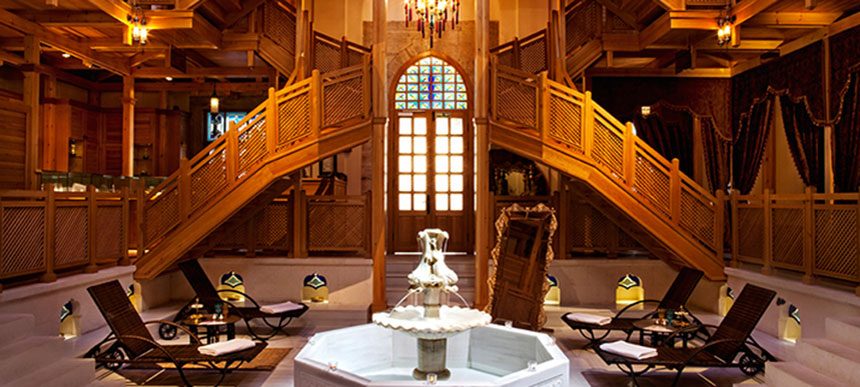 Image credit: Ayasofya Hürrem Sultan Hamam
Image credit: Ayasofya Hürrem Sultan HamamWhat
A hamam or Turkish bath is the Islamic version of a sauna or steam bath. It is a method of cleansing and relaxation that was enjoyed even by members of Turkish royalty.
The whole process usually starts with a steam bath, followed by a body scrub, and culminates with a massage.
Why
A hamam offers the best opportunity for us to relax our mind and body while learning a piece of Turkish history. Most of the hamams in Istanbul are hundreds of years old and some of them were even built for the royal families.
The beautiful historical structures also add to the appeal of Turkish baths. Visitors can enjoy a royal treatment amid the marbled floors and huge domes.
Indulge in a Turkish bath and be pampered like a Sultan!
Best hamams in Istanbul
The Süleymaniye Hamam is a historic bath, located near the Süleymaniye Mosque. It forms part of an area that is controlled by the tourism authorities so tourists are assured of safety and legitimacy. It is said that the Suleiman the Magnificent took the first bath at this royal hamam.
The Cemberlitas Hamam is one of the cleanest and well-maintained hamams in Istanbul. Its beautiful structure was built by the famed Ottoman architect, Mimar Sinan, in 1584.
Ayasofya Hürrem Sultan Hamam, also known as Roxelana’s Bath, was built in 1556 exclusively for Suleiman the Magnificent’s wife, Roxelana. It was restored and opened to the public in 2011, offering visitors a chance to relax and marvel at the wonderful architecture by Sinan the Architect.
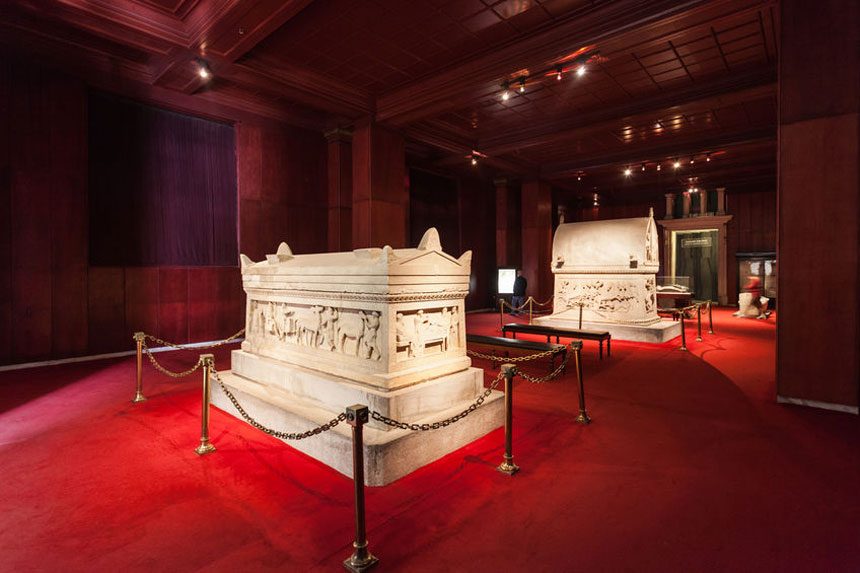 Image credit: saiko3p
Image credit: saiko3p What
Istanbul enjoys a rich history being a strategic center that occupies two continents. As such, museums abound in Istanbul, providing visitors a glimpse of the city’s colorful past and a better understanding of Turkish culture.
There are about 30 museums in Istanbul that showcase Turkish archaeology, art, literature, and military memorabilia, among others.
Why
Visiting a museum is one of the must-do things in Istanbul. It remains a top priority for most tourists who are eager to learn more about Turkish history which plays a significant role in world history.
Learn about the spread of the Roman Empire to the East and the consequent Ottoman conquest of Constantinople. Relive the lives of the Ottoman sultans and their families. Appreciate the talents of great Turkish artists through their artworks.
Best museums to visit in Istanbul
The Archaeology Museum is a three-in-one museum complex that houses the Archaeological Museum, the Ancient Orient Museum, and the Tiled Kiosk Museum. The sarcophagus of Alexander the Great can be found here. Kids can delight in the Trojan Horse model at the children’s section.
The Turkish and Islamic Arts Museum is located inside the old palace of Ibrahim Pasha, the first Grand Vizier of the Ottoman Empire. The museum displays gigantic carpets that hang from the ceiling and a recreation of a Turkish nomadic tent. Don’t forget to sip a cup of Turkish coffee at the museum’s coffee house.
The Kariye Museum, also known as Chora Museum, is a church that was converted into a mosque and later converted to a museum. It showcases exquisite Byzantine mosaics and frescoes.
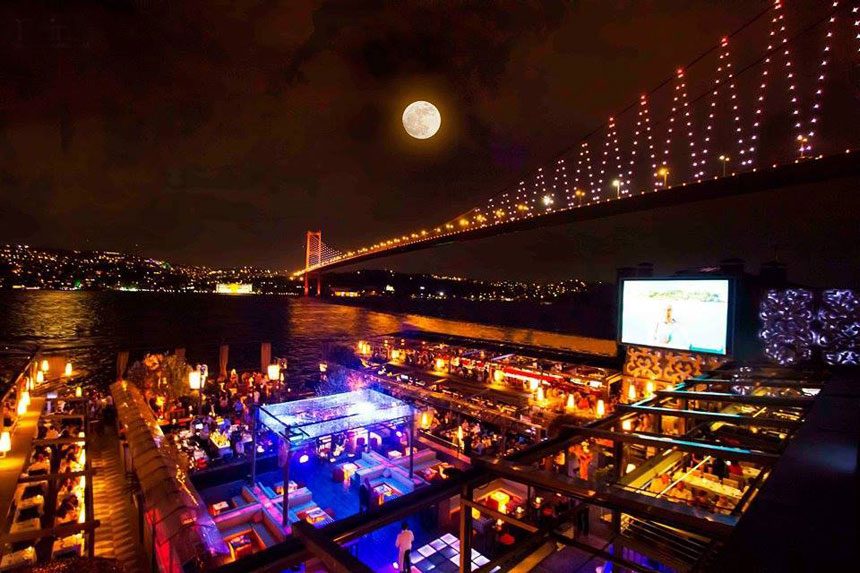 Image credit: Reina/Flickr
Image credit: Reina/FlickrWhat
Ortakoy literally means “middle village”. True to its name, Ortakoy is right in the middle of the European shore along the Bosphorus Strait.
By day, Ortakoy is a bustling neighborhood that is famous for its art galleries, restaurants and cafes. Sundays are livelier due to the Sunday market that is visited by locals and tourists alike. When the sun sets, this place transforms into a hip and trendy haven for partygoers. It is a true partying by the sea experience.
Why
Istanbul’s ritziest bars can be found in Ortakoy, making it a popular choice for those who want to have some good time in Istanbul.
If you don’t want to burn a hole in your pocket, you can opt for the hookah bars, outdoor cafes, or beer pubs in Ortakoy and still have a memorable night with a view of the Bosphorus.
Best places to enjoy the night in Ortkaoy
Dine on Turkish cuisine at Feriye Palace and enjoy some cocktails at the bar. Feriye Palace used to be a mansion that belonged to the sultans. Its seaside location offers a wonderful nighttime view of the Bosphorus, perfect for a romantic dinner date!
For a more budget friendly night out in Ortakoy, take a walk along the cobbled alleys and buy kumpir (Turkish baked potato) at Maya Kumpir or any of the kumpir stalls. To cap the night, sit at one of the cafes, sip Turkish coffee, and smoke hookah while listening to jazz music that bellows from the nearby bars.